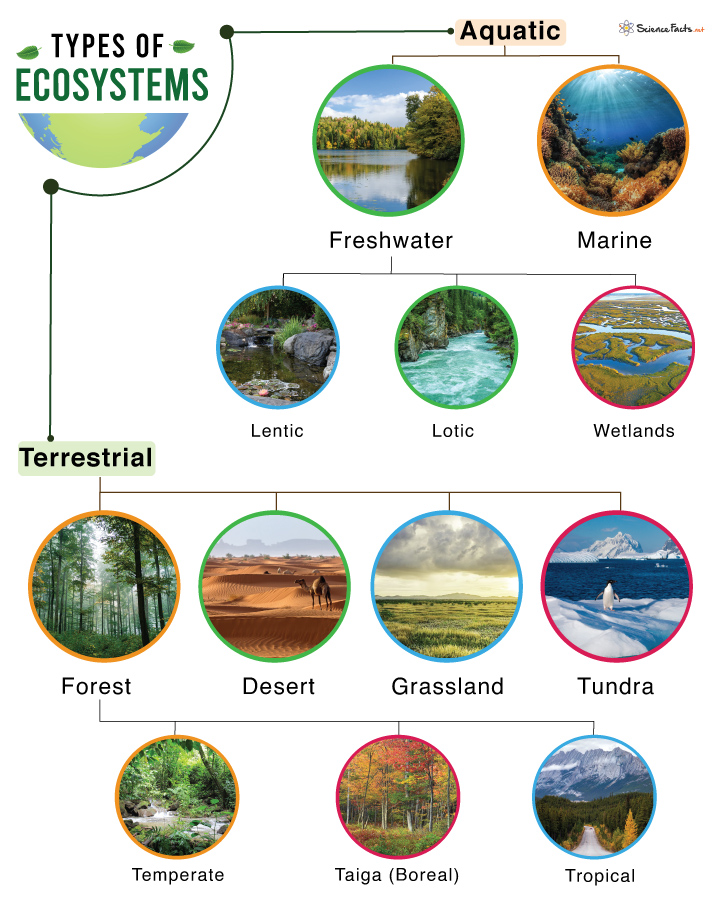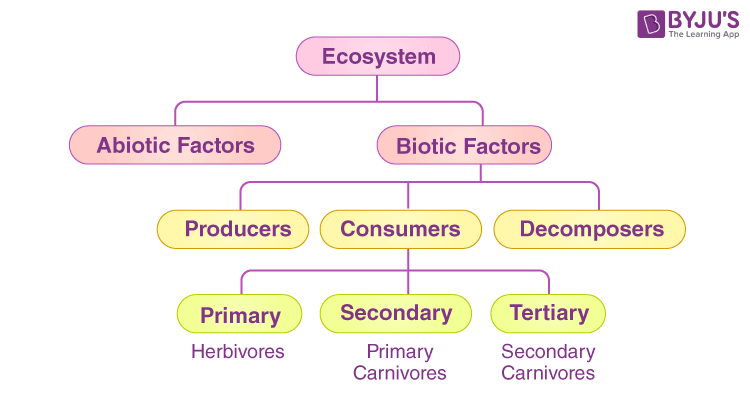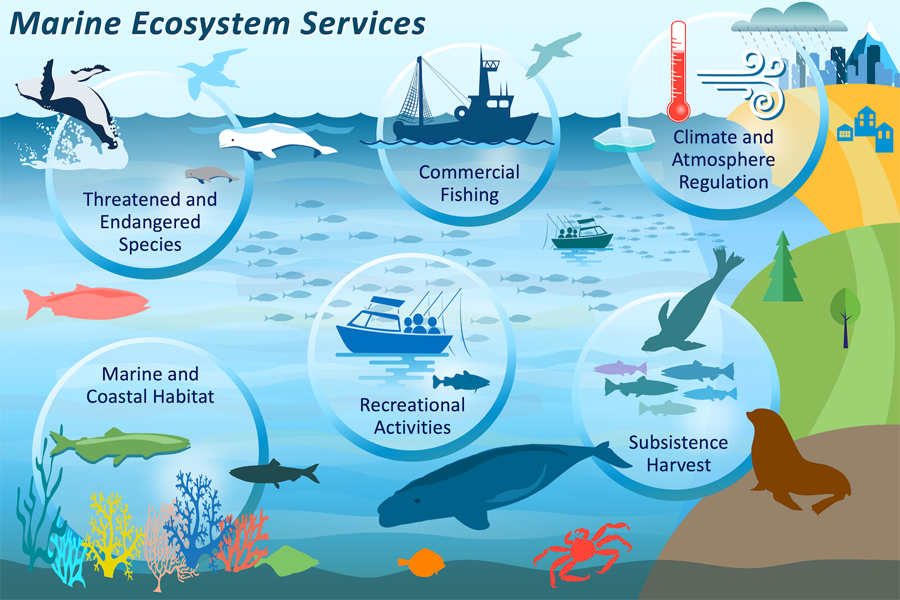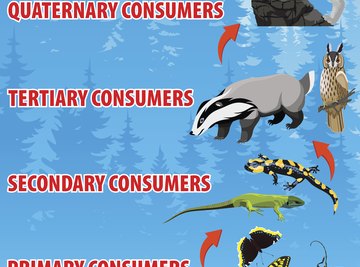Topic ecosystem types: Explore the vast tapestry of ecosystem types, from lush terrestrial forests to the mysterious depths of aquatic realms, uncovering their crucial roles in sustaining biodiversity and supporting life on Earth.
Table of Content
- What are the different types of ecosystems and their importance in maintaining biodiversity?
- Terrestrial Ecosystems
- Aquatic Ecosystems
- Microbiomes
- YOUTUBE: What are ecosystems? Types of Ecosystems for Kids
- Understanding Ecosystems: Definition and Importance
- Major Ecosystem Categories: Terrestrial, Aquatic, and Marine
- Detailed Exploration of Terrestrial Ecosystems
- Insights into Aquatic and Marine Ecosystems
- The Role of Microbiomes in Ecosystems
- Ecosystem Dynamics and Health
- Human Impact on Ecosystems: Challenges and Solutions
- Conservation Efforts: Preserving Our Ecosystems
- Emerging Trends and Research in Ecosystem Studies
What are the different types of ecosystems and their importance in maintaining biodiversity?
There are several different types of ecosystems that play crucial roles in maintaining biodiversity on our planet:
- Forests: Forests are complex ecosystems that are home to a wide variety of plant and animal species. They provide habitat for animals, help filter air and water, and are important in carbon sequestration.
- Grasslands: Grasslands are areas dominated by grasses rather than trees or shrubs. They are important for grazing animals and support a diverse range of species. Grasslands also help prevent soil erosion.
- Deserts: Deserts are arid regions with little precipitation. Despite the harsh conditions, deserts are home to a surprising amount of biodiversity. They play a crucial role in ecosystem functioning and provide habitat for specialized plant and animal species.
- Tundras: Tundras are cold, treeless regions found in the Arctic and at high mountain elevations. They are characterized by permafrost and a short growing season. Tundras are important habitats for migratory birds, caribou, and various plant species adapted to the cold climate.
- Aquatic ecosystems: Aquatic ecosystems include marine and freshwater habitats such as oceans, lakes, rivers, and wetlands. They support a vast array of life and play a crucial role in global climate regulation, nutrient cycling, and providing food for human populations.
Each of these ecosystem types provides unique services and supports a diverse range of species. They contribute to the overall health of the planet by maintaining biodiversity, regulating climate, cycling nutrients, and providing resources for humans. It is important to conserve and protect these ecosystems to ensure a sustainable future for all forms of life on Earth.
READ MORE:
Terrestrial Ecosystems
Terrestrial ecosystems are land-based ecosystems, which include:
- Forest Ecosystems: Diverse in flora and fauna, they can be further categorized based on climatic conditions into tropical, temperate, and boreal forests.
- Desert Ecosystems: Defined by low water availability, they support a unique set of plants and animals adapted to arid conditions.
- Grassland Ecosystems: Dominated by grasses, they support a variety of herbivores and are often found between forest and desert ecosystems.
- Tundra Ecosystems: Characterized by cold, harsh climates, and a short growing season, supporting limited biodiversity.

Aquatic Ecosystems
Aquatic ecosystems are water-based ecosystems, which include:
- Marine Ecosystems: Covering over 70% of the Earth"s surface, they include oceans, coral reefs, and estuaries, supporting a vast array of life.
- Freshwater Ecosystems: Including lakes, rivers, and wetlands, they are crucial for the biodiversity they support and for human consumption.
Microbiomes
Microbiomes refer to the ecosystems of microorganisms existing in various environments, including the human body. They play a crucial role in maintaining health and ecosystem balance.
Ecosystem Dynamics
Ecosystems are dynamic and can change due to natural processes like seasonal variations or human-induced changes such as deforestation. The resilience and resistance of an ecosystem determine its ability to maintain equilibrium and recover from disturbances.

What are ecosystems? Types of Ecosystems for Kids
\"Looking for a fun and educational video for your kids? Our video is packed with engaging content that will keep your little ones entertained while they learn valuable skills and knowledge!\"
Understanding Ecosystems: Definition and Importance
An ecosystem encompasses a dynamic complex of plant, animal, and microorganism communities and their non-living environment interacting as a functional unit. This intricate system includes both biotic, or living, components—such as trees, animals, and bacteria—and abiotic, or non-living, components including minerals, water, and sunlight. Ecosystems play a crucial role in maintaining the balance of the earth"s environment, supporting biodiversity, and providing services essential for human survival such as clean air, water, and fertile soil for agriculture.
Ecosystems are categorized by their nature and location into types such as terrestrial (land-based), aquatic (water-based), and marine (ocean-based). Each type hosts unique biotic and abiotic elements, contributing to the planet"s vast biodiversity. The importance of ecosystems cannot be overstated—they regulate climate, purify water, mitigate natural hazards, cycle nutrients, and provide habitat for wildlife. Furthermore, ecosystems are the foundation for economies around the world, supporting sectors like agriculture, fishing, and tourism, and are integral to cultural identity and recreation, highlighting their intrinsic value to humanity.
Understanding ecosystems and their functions is essential for promoting sustainability and resilience in the face of environmental challenges. By appreciating the complexity and importance of ecosystems, we can better advocate for conservation efforts and sustainable practices that protect these vital systems for future generations.
Types of Ecosystems and their Definition
\"Ever wondered about the true meaning behind a word? Our video provides a comprehensive and easy-to-understand definition, perfect for expanding your vocabulary and gaining a deeper understanding of the topic at hand. Don\'t miss out!\"
Major Ecosystem Categories: Terrestrial, Aquatic, and Marine
Ecosystems are broadly classified into three main categories based on their environment: terrestrial, aquatic, and marine. Each category is vital for supporting a diverse array of life forms and has its own unique characteristics and importance.
- Terrestrial Ecosystems: These are land-based ecosystems which include forests, grasslands, deserts, and tundra. They are characterized by their climate, soil type, and the vegetation that dominates them. Terrestrial ecosystems play a critical role in the carbon cycle, house a majority of the world’s biodiversity, and are directly impacted by human activities.
- Aquatic Ecosystems: Aquatic ecosystems are water-based and can be freshwater or saltwater. Freshwater ecosystems, such as rivers, lakes, ponds, and wetlands, cover a small percentage of the Earth"s surface but are home to a disproportionately large number of species. They are crucial for water purification, flood control, and supporting inland fisheries.
- Marine Ecosystems: Marine ecosystems are found in the ocean and are characterized by their high salt content. They include oceans, coral reefs, and estuaries. Marine ecosystems are essential for regulating the global climate, supporting a vast array of marine life, and providing critical resources for human livelihoods, such as fisheries and tourism.
Understanding these ecosystems and their categories helps in appreciating the complexity of life on Earth and the importance of conserving these natural habitats for future generations.

Detailed Exploration of Terrestrial Ecosystems
Terrestrial ecosystems are diverse environments found across the globe, each with unique characteristics and inhabitants. These ecosystems are categorized based on factors such as climate, soil type, and predominant vegetation, creating distinct biomes that sustain a variety of life forms.
- Forests: Including tropical rainforests, temperate forests, and boreal forests (taigas), these ecosystems are characterized by a high density of trees. Forests are crucial for carbon sequestration, providing habitat for a vast array of species and playing a key role in the global water cycle.
- Grasslands: Known for their vast open spaces filled with grasses, herbs, and shrubs, grasslands include the savannas of Africa and the prairies of North America. They are important for supporting herbivores and play a critical role in agriculture.
- Deserts: Defined by their dry conditions, deserts can be hot or cold. They are home to specially adapted plants and animals that can survive with minimal water. Deserts are important for their unique biodiversity and geology.
- Tundra: Characterized by cold temperatures, a short growing season, and permafrost, tundras are found in the Arctic and high mountain areas. They support a limited range of plants and animals adapted to cold climates.
Each terrestrial ecosystem type supports complex interactions among organisms and between organisms and their environment, contributing significantly to Earth"s biodiversity. Understanding these ecosystems is vital for conservation efforts and for maintaining the health of our planet.
Insights into Aquatic and Marine Ecosystems
Aquatic and marine ecosystems cover a vast portion of the Earth"s surface and are integral to global biodiversity and human economies. These ecosystems range from freshwater rivers and lakes to the expansive saline environments of the world"s oceans.
- Freshwater Ecosystems: Including rivers, lakes, streams, and wetlands, freshwater ecosystems are characterized by their low salt content. They are critical for providing drinking water, supporting agriculture, and sustaining a diverse range of plant and animal life. Freshwater ecosystems also play key roles in nutrient cycling and flood mitigation.
- Marine Ecosystems: Encompassing oceans, seas, coral reefs, and estuaries, marine ecosystems are defined by a high concentration of saltwater. These ecosystems are vital for climate regulation, carbon storage, and supporting an enormous variety of life, including many of the world"s fish stocks. Coral reefs, often referred to as the "rainforests of the sea," are particularly rich in biodiversity.
- Estuaries and Coastal Wetlands: Acting as the transition zones between freshwater and marine environments, estuaries and coastal wetlands are among the most productive ecosystems on Earth. They serve as breeding and nursery grounds for many marine species, buffer zones that protect inland areas from storms, and filters that cleanse pollutants from water.
These aquatic and marine ecosystems face threats from pollution, overfishing, climate change, and habitat destruction. Protecting these vital resources requires global cooperation and sustainable management practices to ensure they continue to support the vast array of life on Earth and human societies.

The Role of Microbiomes in Ecosystems
Microbiomes, consisting of bacteria, fungi, viruses, and other microorganisms, play a foundational role in the health and functioning of ecosystems worldwide. These microscopic communities influence the environment at every level, from soil fertility and plant health to water quality and the climate.
- Soil Microbiomes: Soil microbiomes are crucial for nutrient cycling, breaking down organic matter, and supporting plant growth. They transform nutrients into forms accessible to plants, regulate soil health, and even combat plant pathogens.
- Plant Microbiomes: Plants host unique microbiomes on their leaves, roots, and within their tissues, which can enhance nutrient uptake, provide disease resistance, and improve stress tolerance. These interactions are vital for plant health and productivity.
- Water Microbiomes: In aquatic and marine ecosystems, microbiomes play key roles in filtering and purifying water, breaking down pollutants, and supporting the food web. They are essential for the health of freshwater and marine environments.
- Animal Microbiomes: Animals, including humans, rely on their microbiomes for digestion, immune function, and even behavior. These microorganisms live on the skin, in the gut, and in various other body parts, contributing to the host"s overall health and well-being.
The study of microbiomes has revolutionized our understanding of ecosystems, highlighting the interconnectedness of life and the environment. By influencing everything from agriculture and food security to climate change mitigation, microbiomes underscore the importance of microbial diversity in maintaining ecological balance and supporting life on Earth.
Ecosystem Dynamics and Health
Ecosystem dynamics involve the intricate processes that govern the health, stability, and changes within ecosystems over time. These dynamics are influenced by both natural events and human activities, shaping the resilience and biodiversity of ecosystems across the globe.
- Natural Processes: Factors such as climate change, natural disasters, and seasonal cycles directly impact ecosystem health by altering habitat conditions, resource availability, and species interactions. These processes can lead to shifts in biodiversity and ecosystem structure.
- Human Impact: Human activities, including deforestation, pollution, and overfishing, significantly affect ecosystem dynamics. The reduction in biodiversity and habitat destruction undermines ecosystem resilience, affecting their ability to provide essential services like air and water purification, pollination, and climate regulation.
- Conservation and Restoration: Efforts to conserve and restore ecosystems play a critical role in maintaining their health and dynamics. Protecting natural habitats, reforesting areas, and implementing sustainable management practices help to preserve biodiversity and ecosystem services for future generations.
- Indicator Species and Biodiversity: The presence and health of certain species serve as indicators of ecosystem health. High biodiversity is often a sign of a healthy ecosystem, providing resilience against environmental stressors and supporting a wide range of ecosystem services.
Understanding ecosystem dynamics is essential for developing effective conservation strategies and mitigating the impacts of climate change. By studying these complex interactions, we can better protect our natural environments and ensure their health and sustainability for the future.

Human Impact on Ecosystems: Challenges and Solutions
Human activities have significantly impacted ecosystems worldwide, leading to challenges such as climate change, biodiversity loss, soil erosion, poor air quality, and water scarcity. The burning of fossil fuels, deforestation, overpopulation, and pollution are among the primary causes of these environmental issues, which can affect human behavior and lead to mass migrations or conflicts over resources.
Challenges
- Climate Change: The release of greenhouse gases from burning fossil fuels and animal agriculture has led to global warming, altering climates and threatening biodiversity.
- Deforestation: The removal of forests for agriculture or urban development reduces biodiversity, disrupts ecosystems, and contributes to atmospheric CO2 levels.
- Pollution: Pollutants from industrial, agricultural, and domestic sources contaminate air, water, and soil, affecting human health and wildlife.
- Overexploitation of Resources: Unsustainable fishing, hunting, and resource extraction endanger species and deplete natural resources.
Solutions
To address these challenges, a combination of conservation efforts, sustainable practices, and nature-based solutions is necessary.
Conservation and Restoration
- Implementing laws to protect endangered species and habitats.
- Restoring ecosystems such as forests, wetlands, and coral reefs to preserve biodiversity and enhance ecosystem services.
- Supporting captive-breeding programs to boost populations of endangered species.
Sustainable Practices
- Adopting renewable energy sources to reduce greenhouse gas emissions.
- Practicing sustainable agriculture and forestry to protect soil and water resources.
- Reducing waste and promoting recycling to minimize pollution.
Nature-Based Solutions
Nature-based solutions leverage the power of natural ecosystems to address environmental challenges while benefiting biodiversity and human wellbeing. Examples include:
- Protecting and restoring mangrove forests to shield coastlines from erosion and storms while storing carbon.
- Rebuilding oyster reefs to improve water quality and protect against wave erosion.
- Using green infrastructure in urban areas, such as green roofs and rain gardens, to manage stormwater, reduce flood risks, and support urban biodiversity.
By integrating these solutions, individuals and communities can work towards mitigating the negative impacts of human activities on ecosystems, ensuring a sustainable future for all species, including humans.
Conservation Efforts: Preserving Our Ecosystems
Conservation efforts globally focus on preserving the diversity of life on Earth at all biological organization levels, including ecosystems, species, populations, and genes. These efforts are crucial for sustaining life by maintaining the variety of life and the services ecosystems provide, such as climate regulation, clean air, and water.
Global Initiatives and Strategies
The International Union for Conservation of Nature (IUCN) has developed a comprehensive system for classifying and mapping all ecosystems, which aids in coordinated and effective conservation management. This global typology of ecosystems is essential for setting ambitious conservation goals and tracking progress towards achieving them.
Key Conservation Actions
- Protecting biodiversity hotspots and critical ecosystems, such as tundras, mangroves, and cloud forests, to prevent species extinction and maintain genetic diversity.
- Engaging in species recovery programs, like those for the black rhino in southern Africa and giant pandas in China, showcasing successful wildlife recovery stories.
- Implementing community-based conservation efforts that empower people to protect wildlife and the natural resources upon which they depend for economic and social well-being.
- Combating wildlife crime through policy, advocacy, and innovative technologies to stop poaching and illegal trade.
- Supporting legal and sustainable practices in the use of natural resources to ensure the longevity of ecosystems and the species they support.
Conservation and Human Well-being
Conservation efforts not only aim to protect wildlife but also to improve human lives by ensuring the continued provision of essential goods and services from nature. This includes breathable air, clean water, food, and climate regulation, all of which are crucial for human health and well-being.
WWF"s Role in Conservation
The World Wildlife Fund (WWF) plays a pivotal role in conserving wildlife by focusing on protecting populations of the most ecologically, economically, and culturally important species. WWF"s strategies include stopping wildlife crime, empowering communities, and preserving natural habitats to ensure the survival of both wildlife and human communities.
Conclusion
Conservation is a multidisciplinary effort that involves not just the biological sciences but also economics, law, social sciences, and community engagement. By working together, we can ensure the preservation of our planet"s incredible biodiversity for future generations.

READ MORE:
Emerging Trends and Research in Ecosystem Studies
Recent research in ecosystem studies highlights several critical areas affecting freshwater ecosystems, emphasizing the urgent need for innovative solutions and sustainable management practices. The focus areas include:
- Impact of pollution on freshwater ecosystems and innovative pollution mitigation strategies.
- Comprehensive reviews of sustainable freshwater resources management policies and exemplary case studies.
- Investigations into the effects of multiple stressors on freshwater ecosystems.
- Analysis of climate change impacts on freshwater ecosystems, including future scenarios and biodiversity preservation strategies.
- Development and application of ecological modeling within broader freshwater management and restoration efforts.
- Creation of new generic and stressor-specific biotic indices to enhance ecological monitoring.
- Cost-effective and time-efficient ecological restoration techniques.
- Advancements in fundamental freshwater ecology contributing to policy framework development.
This focus underscores the importance of interdisciplinary approaches to address the complex challenges facing freshwater ecosystems, aiming for a balanced relationship between human activity and environmental sustainability.
Exploring ecosystem types unveils the intricate balance of life, highlighting the need for conservation and sustainable interaction. Discover the beauty and complexity of ecosystems to inspire positive action towards preserving our planet"s biodiversity.





